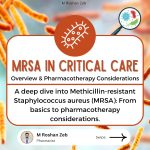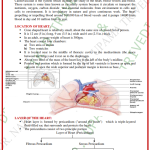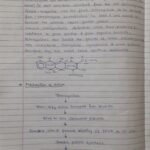1
PARENTERALS
LARGE AND SMALL
VOLUME PARENTAL
PRESENTED BY :
JOGINDER PRESENTED TO :
1ST SEMESTER, M.PHARMA DR. YASMIN SULTANA
(PHARMACEUTICS).
School Of Pharmaceutical School Of Pharmaceutical
Education and Research, Education and Research,
JAMIA HAMDARD J AMIA HAMDARD
2
CONTENT
Introduction
Routes of administration
Advantages & disadvantages
Small Volume Parental (SVP)
Large Volume Parental (LVPs) and it’s type
Processing of parenterals
Formulation of parenteral
Packaging & Sterilization
Comparision between SVP & LVP
Evaluation of parenterals
References
3
INTRODUCTION
Parental refers injectable route of administration.
It is derived from GREEK word Para (outside) and
Enteron (intestine).
It defined as sterile drug, solution or suspension that is
packaged in a manner for suitable administration by
hypodermic injection either in the prepared form or
after addition of a suitable solvent or suspending agent.
These are the preparations which are given other than
oral routes.
4
Parenteral products are injected through the skin or
mucous membranes into the internal body
compartments.
Based on volume they are classified into two types :
1 ) Small volume parental ,
2 ) Large volume parental .
5
ROUTES OF ADMINISTRATION :
€ ROUTES OF ADMINISTRATION
Three primary routes of
parenteral administration are
commonly employed :€
1) Subcutaneous
2) Intramuscular €
3) Intravenous €
Other routes :
Intra-arterial,Intraarticular,
Intraspinal , Intracerebral,
Intracardial , Intrapleural
,Intraocular, Intrapritoneal.
6
ADVANTAGES :
€ Quick onset of action.
Suitable for the drugs which are not administered
by oral route. €
Useful for unconscious or vomiting patients.
Useful for patients who cannot take drugs orally. €
Useful for emergency situations.
7
DISADVANTAGES :
€ Pain on injection.
Difficult to reverse an administered drug’s effects. €
Sensitivity or allergic reaction at the site of injection. €
Requires strict control of sterility & non pyrogenicity
than other formulation.
Only trained person is required.
Require specialized equipment, devices, and techniques
to prepare and administer drugs.
More expensive and costly to produce.
8
Small Volume Parental(SVP)
According to USP “ an injection that is packaged in
containers labeled as containing 100 ml or less” is called
as SVP.
9
€ All the sterile products packaged in vials, ampoules,
syringes, bottles or any other container that is 100ml or
less fall under the class of SVP.
Ophthalmic products packaged in squeezable plastic
containers, although topically applied to the eye rather
than administered by injection, also fall under the
classification of Small Volume Injections (SVI) as long as
the container size is 100ml or less.
SVP aqueous solutions can be administered by
intravenous route because of local irritation.
10
Small volume parenteral products can be formulated and
packaged in several ways and include a wide variety of
products like :
Pharmaceutical products.
Biological products.
Diagnostic agents.
Allergenic extracts.
Radiopharmaceutical products.
Dental products.
Genetically engineered or biotechnology products.
Liposome and lipid products.
11
Large Volume Parenterals (LVPs)
A single-dose injection that is intended for intravenous
use and is packaged in containers labeled as containing
more than 100 ml.
Packaged in glass bottles or in large volume flexible
containers.
May contain greater than 100 ml to greater than 1 or 2 L.
Sterile and pyrogen-Free.
Essentially free of particulate matter.
No anti-microbial agents.
12
Types of Large Volume Parental
Electrolytes
Carbohydrates
Nutritional Solutions
– Proteins
– Lipid Emulsions
Peritoneal Dialysis
Irrigating Solutions
13
COMPARISION
PARAMETERS SVP LVP
Volume <= 100 ml 101 – 1000ml
Route IV , IM , SC IV
Dosage Unit Single or Multiple Multiple
Preservative Used Not used
Buffer Used Not used
Isotonicity Not essential Must
Pyrogenicity Not essential Must
Formulations Solution. Solution,
Emulsion. O/W emulsion.
Suspension.
Uses As therapeutic agent, As nutrition, Detoxification,
As diagnostic agent. Aid during surgery.
14
FORMULATION OF PARENTERAL
1) Therapeutic Agents
2) Vehicles
Water
Aqueous vehicles
Non-aqueous vehicles
3) Added substances (Additives)
Antimicrobials
Protectants
Antioxidants
Solubilizing Agents
Buffers
Stabilizers
Bulking agents
Tonicity-adjusting agents
Chelating Agents
15
1) Therapeutic Agents
Ex : Insulin , Antibiotics , Vaccine , Antipyretics ,
Analgesiics , Dextrose , Nacl , Electrolytes.
2) Vehicles : Water
1) Water For Injection(WFI) USP :
Highly purified water used as a vehicle for injectable
preparations which will be subsequently sterilized. €
USP requirement include not more than 10 parts per
million of total solids. €
pH of 5.0 to 7.0 WFI may prepared by either
distillation or reverse osmosis.
16
Stored for less than 24hr at RT or for longer times at
specific temperatures. Should be meet USP pyrogen test
It may not contain any added substances. €
Stored in chemically resistant tank.
2) Bacteriostatic Water for Injection (BWFI) :
This type of water used for making parenteral solutions
prepared under aseptic conditions and not terminally
sterilized.
Need to meet USP sterility test.
It contain 0.9% benzyl alcohol that is used to dilute or
dissolve medications.
17
3) Sterile Water for Injection USP (SWFI) :
Sterile , nonpyrogenic , distilled water in a single dose
container for intravenous administration after addition of
a suitable solute.
It may also be used as a dispensing container for diluent
use.
No antimicrobial or other substance has been added.
The pH is 5.5 (5.0 to 7.0).
Sterile Water for Irrigation, Wash wounds, surgical
incisions, or body tissue.
18
Aqueous vehicles
These are primarily to effect solubility of drugs and
reduce hydrolysis.
Prepared by Distillation , ion exchange or reverse
osmosis.
Except purified water all are pyrogen free.
Non-aqueous vehicles
Fixed oils , Peanut oil , Cotton seed oil , Sesame oil,
Soybean oil, Ethyl oleate , Isopropyl myristate.
19
PRETREATMENT OF WATER
The water for injection is most commonly used solvent.
Water for injection is the water prepared by reverse
osmosis or distillation and contains no added
substance.
The water must be adequately pretreated to ensure the
uniformity and to promote constant quality and high
efficiency.
20
REVERSE OSMOSIS (RO)
This is define as a process for the separation of solutes
from the water by applying pressure on more
concentrated solution in contact with semi permeable
membrane to give less concentrated solution.
The solutes may be charged (ions) or essentially neutral
(organics).
Each is excluded or removed by different mechanisms.
Charged particles are repelled or excluded due to
interfacial tension at the water membrane interface.
21
Organics are excluded by sieve
mechanism so that size and molecular
weight are important attributes.
The higher the size or molecular
weight of a substance, the most
efficiently it is excluded.
Thus virus, bacteria, and pyrogen are
removed by reverse osmosis.
The overall system primarily depends
on the composition of feed water and
the quality of the final water desired.
22
DISTILLATION
The action of purifying a liquid by a process of heating and cooling.
The process of removal of impurities from the liquid by continuous
heating above 100 degrees and at atmospheric pressure cooling
simultaneously.
This aids in killing the living microorganisms.
Prior to distillation , water used as source for WFI should be done
with pretreatment.
Perfect phase change would leave all the impurities behind producing
pure water vapor.
After this the vapor is condensed to liquid water.
It is maintained at pressure greater than the water of lower purity.
23
The objective is to control the
number of organisms per unit
volume of water used for final rinses
of equipment and containers.
After distillation it is filtered and
stored in a chemical resistant
stainless steel tank at a cold
temperature around 5 0C or at an
elevated temperature between 65-
85 0C to inhibit the microbial
growth and pyrogen formation.
24
3) Additives in Parenteral :
Antimicrobials :
Required to prevent microorganism growth during storage.
Phenylmercuric nitrate and Thiomersol 0.01% Benzethonium
chloride and benzalkonium chloride, Phenol or cresol 0.5% –
Chlorobutanol 0.5%
Antioxidants :
Antioxidants function by preferentially with molecular oxygen and
minimizing or terminating the free radical auto-oxidation
reaction.
eg – Reducing agents : sodium bisulfite, ascorbic acid, thiourea.
Blocking agents : ascorbic acid esters, butylated
hydroxytoluene (BHT), butylated hydroxyanisole (BHA) .
Synergistic : citric acid , tartaric acid, citraconic acid.
25
Buffers
Added to maintain pH Results in stability Effective range,
concentration, chemical effect
e.g : Citrate and Acetate buffer, and Phosphate buffer
Citrates pH 2 – 6
Acetates pH 4 – 6
Phosphates pH 6 – 8
Bulking agents
For freeze dried preparation (solids) eg mannitol, lactose
sucrose, dextrose.
26
Chelating Agents
Release of heavy metals from the rubber closers etc can react with
the main medicament of the preparation, to prevent chelating
agents mainly trisodium or calcium disodium salt of ethylene
diamine tetra acetic acid (EDTA).
Solublizer, wetting agent or emulsifier :
Lecithin , Polysorbate 80(Tweens) , Sodium deoxy cholate
, Theophylline .
Stabilizers :
Creatinine , Glycine , Sodium caprylate .
27
Tonicity Modifiers :
Most important for intraspinal injections and intravenous
injection.
In case of intraspinal injections, because the circulation of the
cerebrospinal fluid is slow and slight disturbance of osmotic
pressure quickly cause headache and vomiting.
Its not essential for subcutaneous and intramuscular
injection.
Isotonic solution does not cause hemolysis.
Electrolytes : Nacl €
Non elecrolytes : Glucose,Mannitol,Glycerine €
Ex. Of isotonic:Dextrose injection 5%&Nacl injection 0.9%
Toncity can be measurement by: Freezing point depression ,
Hemolytic method using RBC.
28
PROCESSING OF PARENTERALS
S.NO. STEPS
1. Cleaning of containers, closures and equipments
2. Collection of materials
3. Preparation of parenteral products
4. Filtration
5. Filling the preparation in final containers
6. Sealing the containers
7. Sterilization
8. Evaluation of parenteral preparation
9. Labeling and packaging
29
PACKAGING :
€Packaging materials : Glass, Plastic, Rubber €
Sealing Ampoules : Ampoules are unique in that the
primary and secondary seal are the same. €
Ampoules are sealed by melting a portion of glass in a
flame. €
Pull seal – Slow, Reliable, powder or other types with
wide opening Roll or Tip seal
30
Sealing of Bottles, Cartridges and
Vials : Primary seal consisting of
a tight rubber or plastic closure
and secondary seal that holds
the primary seal in place.
Secondary seals are usually
aluminum caps that are crimped
on to a thread less container.
31
CONTAINERS
1. GLASS :
Highly resistant Borosilicate glass,
Treated soda lime glass,
Regular soda lime glass,
N.P (Non-parenteral) glass.
Type 4 is not used for parenteral packaging , other all are used for
parenteral packaging.
2. PLASTIC
Plastic containers are used but they face following problems
permeation , sorption , leaching , softening .
32
3. RUBBER :
To provide closure for multiple dose vials, IV fluid bottles,
plugs for disposable syringes and bulbs for ophthalmic
pipettes, rubber is the material of choice.
Problems associated with rubber closures are
incompatibility,
chemical instability,
physical instability .
33
CLOSURE :
Characteristics of Good Pharmaceutical rubbers
Good ageing qualities
Satisfactory hardness and elasticity
Resistance to sterilization conditions
Impermeable to moisture and air
Examples :
Butyl Rubbers , Natural Rubbers , Neoprene Rubbers ,
Polyisoprene rubbers , Silicone Rubbers
34
€ STERILIZATION :
Steam sterilization €
Dry heat sterilization €
Sterilization by filtration €
Gas sterilization €
Sterilization by ionizing radiation
35
EVALUATION OF PARENTERALS
The finished parenteral products are subjected to the
following tests , in order to maintain quality control :
1) Sterility test
2) Clarity test
3) Leakage test
4) Pyrogen test
5) Assay
36
1) Sterility test
It is a procedure carried out to detect and conform absence of any
viable form of microbes in or on pharmacopeia preparation or
product.
Method of sterility testing
a) METHOD 1 Membrane filtration method
b) METHOD 2 Direct inoculation method
Membrane filtration method ( METHOD 1) :
Membrane filtration Appropriate for : (advantage)
I) Filterable aqueous preparations
II) Alcoholic preparations
III) Oily preparations
IV) Preparations miscible with or soluble in aqueous or oily
(solvents with no antimicrobial effect)
37
All steps of this procedure are performed aseptically in a Class 100
Laminar Flow Hood.
Membrane filter 0.45μ porosity
Filter the test solution
After filtration remove the filter
Cut the filter in to two halves
First halves (For Bacteria)
Second halves (For Fungi)
Transfer in 100ml culture media
Transfer in 100ml culture media
( Fluid Thioglycolate medium )
(Soyabeans Casein Digest medium)
Incubate at 30-350C for not less then
Incubate at 20-250C for not less then
7 days
14 days
Observe the growth in the media
Observe the growth in the media
38
Direct inoculation method (METHOD) :
Suitable for samples with small volumes.
Volume of the product is not more than 10% of the
volume of the medium.
Suitable method for aqueous solutions, oily liquids,
ointments and creams.
Direct inoculation of the culture medium suitable
quantity of the preparation to be examined is transferred
directly into the appropriate culture medium & incubate
for not less than 14 days.
39
2) Clarity Test
Particulate matter is defined as unwanted mobile insoluble matter
other than gas bubble present in the product.
If the particle size of foreign matter is larger than the size of RBC ,
it can block the blood vessel.
The permit limits of particulate matter as per I.P. are follows.
Particle size in µm (equal to or large than) Maximum number of particles per ml
10 50
25 5
50 Nil
40
3) Leakage Test
The sealed ampoules are subjected to small cracks which occur
due to rapid temperature changes or due to mechanical shocks.
Filled and sealed ampoules
Dipped in 1% Methylene blue solution
Under negative pressure in vacuum chamber
Vacuum released colored solution enter into the ampoule
Defective sealing
Vials and bottles are not suitable for this test because the sealing material
used is not rigid.
41
4) Pyrogen Test
Pyrogen = Pyro (Greek=Fire) + Gen (Greek = beginning)
Fever producing , metabolic by-products of microbial growth and
death.
Bacterial pyrogens are called ENDOTOXINS. Gram negative
bacteria produce more potent endotoxins than gram positive and
fungi.
Endotoxins are heat stable lipopolysaccharides (LPS) present in
bacterial cell walls, not present in cell-free bacterial filtrates.
42
Limulus Amebocyte Lysate (LAL) Test
Limulus Amebocyte Lysate (LAL) Test another method for the
determination of pyrogenic endotoxins.
In this method the test solution is combined with a cell lysate from
the ambeabocyte (Blood Cells) of horse shoe crab.
Any endo toxin that might be present will be coagulated with
protien fraction of the ameabocytes and results in the formation of
a gel.
This consider to be simple , rapid and of greater sensitivity that
the rabbit test.
43
5) Assay
Assay is performed according to method given in the
monograph of that parental preperation in the
pharmacopoeia.
Assay is done to check the quantity of medicament
present in the parenteral preperation.
44
45




